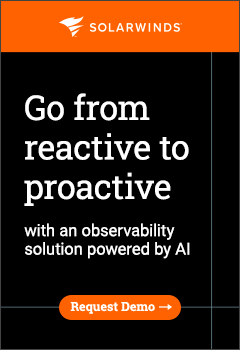By Lesley Moore, Director, Field Services, Workday
Implementing new HR and finance systems in the public sector can be daunting.

Traditionally, these systems have been riddled with challenges, including extensive customisation, long testing phases, poor reliability and difficulty applying software and a lack of updates. Not only did that mean public sector bodies weren’t getting a good return on their most valuable resources – their people and their money – but it acted as a disincentive to change. Why – the argument went – expose yourself to the risks of a new system, when there’s little reward?
Though this attitude understandably lingers, the technology, thankfully, has evolved. Today, cloud-based SaaS (software as a service) HR and Finance systems are replacing the on-premise and legacy systems of old. In place of cumbersome interfaces and time-consuming tests, these systems offer powerful out-of-the-box features that can be adopted with ease.
Intuitiveness, however, is just one part of the picture. Reliability, safety, security and cost of ownership are other considerations that must be taken into account. Here, too, SaaS solutions can offer new benefits. If we’re to empower finance and HR teams with better technology, challenge the perception of these system’s potential and offer public sector bodies a more productive future, it’s worth examining how the landscape has changed.
Every cloud is unique
The days of on-premise systems are increasingly behind us. Like the private sector, the public sector is aware that the benefits of the cloud – from lower maintenance costs to more powerful features – cannot be ignored.
Nevertheless, not all cloud-based options are created equally. After decades of using on-premise solutions, there can be a temptation to simply lift and shift those legacy platforms to the cloud – sometimes on behalf of the companies providing them.. There’s a misconception that this approach minimises business impact and commercial risks like costs or testing phases. In reality, this couldn’t be further from the truth. If you’re going to upgrade your system, this approach only goes half way and exposes you to inefficiencies and poor ROI, and perpetuates vendor lock-in..
Cloud-native ERP systems like Workday are the other side of the coin and offer benefits that go beyond a change of server infrastructure. These solutions offer an ‘adopt, not adapt’ approach – meaning features are pre-built and can be configured rather than customised to meet individual department bodies’ needs. Whereas, a legacy cloud system might require months worth of coding and testing and coding to adapt a new feature to a specific organisation, with a cloud-native system the same result can be achieved in less than a day – often in just a few minutes.a day.
Likewise, security and feature updates are automatic rapid in cloud-native systems, and accessing new features is simplified. Because everything is pre-tested and built by the solution provider, rollouts are fast. With these solutions, customersHR and finance teams are no longer paying to act as their supplier’s own software testing team beta-testers. Instead, they get the intended product from day one. This is why it’s crucial that buyers looking into cloud transformation evaluate the market – and don’t simply opt for a cloud-port of a legacy system that carries over inefficiencies that should be left behind.
Reaping the rewards of SaaS implementation
Perhaps even more important than the logistical benefits, like easier maintenance and short testing periods, are the results a SaaS implementation can offer to the end users in finance and HR departments.
One of the biggest boons to these teams is the ability to undertake sophisticated analytics on their growing datasets. To date, the public sector has often struggled to extract value from data. With reams of it trapped in legacy systems IT teams are left struggling to service ad hoc requests to put it to use.
A shift to cloud-native systems can keep that data tightly guarded, while deploying a layer of sophisticated analytics over the top, which delivers practical insights. Whether used for financial forecasting, identifying skill gaps or annual audits, these advanced analytics bring concrete benefits to HR and finance productivity.
With a platform like Workday Prism Analytics, IT teams remain in control of security, while teams can self-serve insights without any coding or additional software special licences required. This is a win-win: IT teams can focus on priorities like security, while individual departments can easily assess and share valuable insights.
Alongside putting data to work, cloud-native platforms are also more easily integrated with other critical third-party systems, without additional costs or requiring extra layers of code to be built. All of this helps to raise the bar when it comes to HR and finance productivity. Those teams become more autonomous, data-driven and engaged because they can easily find and deploy the insights they need, whenever they need them.
However, this doesn’t mean help isn’t available when needed. Cloud-native providers like Workday, and its net implementation partners, maintain ongoing support and guidance when needed to ensure organisations are maximising the return on their investment and operating with confidence.
However, it does mean individual HR or finance teams, as well as their larger organisations, have the autonomy to adjust systems to their changing needs without having to call out a Systems Integrator for every new request.
The silver lining: future-proofing for AI
With the age of AI well underway, cloud-native SaaS systems additionally offer a future-proof solution for the public sector. These platforms can roll-out new AI features as they become available, with minimal disruption to teams. For organisations that are still experimenting with where AI fits within their workflows, they also offer a safe way to turn such features on and off, without needing to rework an entire system.
Beyond limited AI functions, the drawbacks of legacy systems and their cloud-based equivalents – long and costly implementation, lengthy update periods and limited features – can no longer be ignored.
For leaders looking to upgrade their HR and finance systems, the process no longer has to be a painful one. There’s an opportunity to break the vicious cycle of high costs and increasingly poor return on investment for outdated technology, and to instead embrace a future of work that’s more productive, simpler and cost effective for the public sector and its people.






Recent Comments